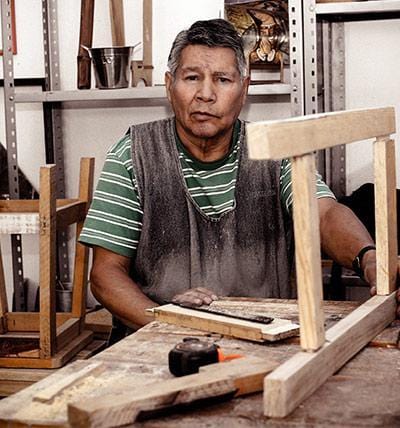There's something deeply satisfying about heating your home with wood. The crackling sound, the radiant warmth, and the knowledge that you're using a renewable resource all contribute to an experience that modern furnaces simply can't match. But beyond the ambiance, wood stoves offer real practical benefits: lower heating bills, independence from the power grid during outages, and a reliable heat source that you control.
If you've been considering a wood stove for your home, you might be surprised to learn that installing one yourself is more accessible than many people think. While it does require careful planning and attention to detail, it's not the mysterious trade secret that some might have you believe. With the right approach and quality materials, this can be a rewarding weekend project that pays dividends for years to come.
Understanding the Basics
Before you start shopping for equipment, it helps to understand how a wood stove system works. At its core, the system consists of the stove itself and the chimney pipe that channels smoke and gases safely out of your home. That chimney pipe is where many homeowners get intimidated, but it doesn't need to be complicated.
The pipe system typically consists of two parts: the stove pipe that runs from your stove to the ceiling or wall, and the chimney pipe that continues from there to above your roofline. The stove pipe operates in your living space and can be single wall or double wall construction. The chimney portion, which passes through your ceiling, attic, and roof, needs to be insulated to prevent heat transfer to combustible materials.
Choosing Your Equipment
When it comes to selecting your chimney components, you'll want to pay attention to diameter requirements. Most residential wood stoves use either 6 inch or 8 inch pipe, with 6 inch being the most common for smaller to medium sized stoves. Your stove's manual will specify exactly what size you need, and it's important to match this precisely. Using the wrong diameter can create draft problems and safety issues.
Quality matters significantly with chimney components. This isn't an area where you want to cut corners. Look for systems that meet UL standards and have a solid reputation in the industry. The best chimney pipes for wood stoves are constructed with proper insulation, durable materials, and secure connections that will last for decades. When you're dealing with high temperatures and the safety of your home, investing in proven products makes sense.
For those working with standard residential stoves, a 6 inch stove pipe system will handle the job well. These systems are designed to accommodate the output of most home heating stoves while fitting comfortably through standard ceiling and roof penetrations.
Planning Your Installation
The first step in any wood stove installation is careful planning. You'll need to consider several factors: where in your home the stove will sit, how the pipe will route to the exterior, what building codes apply in your area, and what clearances you need from combustible materials.
Most building codes require specific distances between your stove, pipes, and any combustible surfaces like walls, ceilings, and furniture. These aren't arbitrary numbers. They're based on testing and real world fire safety data. Your stove's manual will list these clearances, and local codes may have additional requirements. Check with your building department before you start, and consider pulling a permit if required. It might seem like extra paperwork, but it ensures you're building a safe system and protects your home insurance coverage.
One often overlooked aspect of planning is thinking about how you'll supply combustion air to your stove. Wood stoves need oxygen to burn efficiently, and they'll pull that air from somewhere. If your home is tightly sealed for energy efficiency, you may want to install a dedicated air supply to prevent the stove from pulling air down your other chimneys or creating negative pressure issues.
The Installation Process
Once you've done your planning and gathered your materials, the actual installation follows a logical sequence. You'll start by positioning your stove on a proper hearth pad. This non combustible base protects your floor from heat and stray sparks. The pad needs to extend beyond the stove opening according to code requirements.
From there, you'll assemble your stove pipe, working upward from the stove collar. Each section should fit snugly into the next, with the crimped end pointing downward. This orientation prevents creosote from leaking at the joints as it runs back down the pipe. Most systems use either twist lock connections or screws to secure the joints.
When you reach your ceiling penetration, you'll install a ceiling support box. This serves multiple purposes: it provides structural support for the vertical chimney, maintains proper clearances from ceiling joists, and creates a finished appearance. The chimney pipe continues up through this box, through your attic space, and out through the roof.
The roof penetration requires a flashing kit to seal against weather. This is where attention to detail really matters. Water damage from a poorly installed flashing can cause far more trouble than any stove related issue. Take your time with this step, and don't hesitate to use extra sealant in addition to the mechanical fasteners.
Above your roof, the chimney needs to extend high enough to ensure proper draft and meet fire safety clearances. The general rule is that it should be at least 3 feet higher than the point where it exits the roof and at least 2 feet higher than any part of the building within 10 feet. This "3-2-10 rule" helps ensure that wind patterns don't push smoke back down your chimney.
What Makes It Doable
Several factors make this a realistic DIY project for someone with basic home improvement skills. First, modern chimney systems are designed with the installer in mind. Components fit together logically, instructions are generally clear, and the tools required are common ones that most homeowners already have: a drill, some wrenches, tin snips, a level, and a ladder.
Second, you can break the project into manageable phases. You might install the stove and interior pipe one weekend, tackle the roof penetration another time when weather is good, and finish the chimney cap when you're ready. There's no requirement to complete everything in one marathon session.
Third, there's a wealth of information available. Manufacturer instructions have improved dramatically over the years. Online videos can show you exactly how specific connections work. Forums are full of people who've done similar installations and are happy to share advice.
That said, it's important to know your limits. If you're not comfortable working on a roof, hire someone for that portion. If cutting a ceiling penetration through engineered trusses makes you nervous, bring in a carpenter for that step. There's no shame in getting help with specific tasks while still doing the bulk of the work yourself.
The Practical Benefits
Beyond the satisfaction of completing the project yourself, there are tangible benefits to understanding your heating system. When you've assembled it with your own hands, you know exactly how it works and what to look for during annual maintenance. You'll recognize immediately if a pipe section has shifted or if a seal needs attention.
The cost savings can be significant too. Professional installation typically costs between $2,000 and $4,000 depending on complexity and your location. If you're capable of doing the work yourself, you'll only need to budget for materials and permits. That difference can pay for a lot of firewood, or it might make a higher quality stove affordable.
There's also flexibility in timing and customization. You can work at your own pace, make adjustments as you go, and choose exactly the right components for your situation without compromising based on what an installer has in stock or prefers to work with.
Common Sense Precautions
While DIY installation is certainly possible, some precautions are non negotiable. Always follow the manufacturer's instructions for both your stove and your chimney system. These aren't suggestions, they're requirements for safe operation and often for maintaining warranties.
Use only listed and approved components. Mixing and matching parts from different manufacturers can create dangerous incompatibilities. Stick with a complete system from a single reputable source.
Maintain required clearances even if they seem excessive. These distances are based on worst case scenarios and provide a safety buffer. Reducing them to save space or for aesthetic reasons is a serious mistake.
Consider having your completed installation inspected by a qualified professional before your first fire. Many chimney sweeps offer this service for a reasonable fee. They can spot potential issues that might not be obvious to someone less experienced, and they can provide peace of mind that you've built a safe system.
Long Term Considerations
Once your stove is installed and running, regular maintenance becomes important. Annual chimney cleaning removes creosote buildup that could lead to a chimney fire. Visual inspections of pipe connections and seals should happen more frequently, especially during the first year as everything settles in.
Keep records of your installation, including photos of key steps, receipts for components, and any permit documentation. This information is valuable for insurance purposes and will be helpful if you ever sell your home.
Moving Forward
Installing a wood stove represents a significant upgrade to your home's heating capabilities and your energy independence. It's a project that combines practical skills with careful planning, and the result is a system that can provide reliable heat for decades.
The key is approaching it methodically. Educate yourself about what's required, source quality components, follow the codes and guidelines, and don't rush through critical steps. With that foundation, you'll find that this is an achievable project that offers both immediate rewards and long term value.
For many homeowners, the combination of learning a valuable skill, saving money on installation, and creating a more self sufficient home makes this one of the most satisfying home improvement projects they've undertaken. The first time you sit down in front of your stove on a cold evening, knowing that you built the entire system yourself, you'll understand why so many people choose this path.
ABOUT THE AUTHOR
Nurlana Alasgarli
Content Specialist
Nurlana Alasgarli is a professional copywriter with more than 6 years of creative writing experience. Having lived and experienced all over the world, there are many writing genres that Nurlana follows, including nature, arts and crafts and the outdoors. Nurlana brings life to content creation, captivating her readers.






